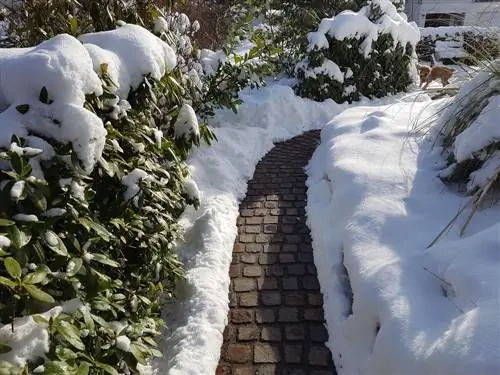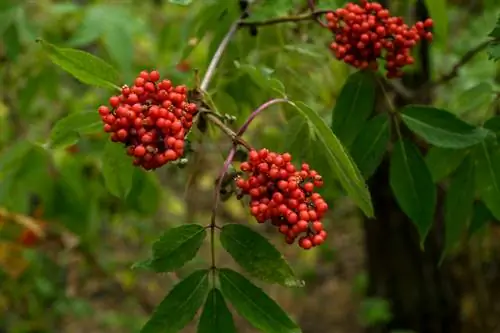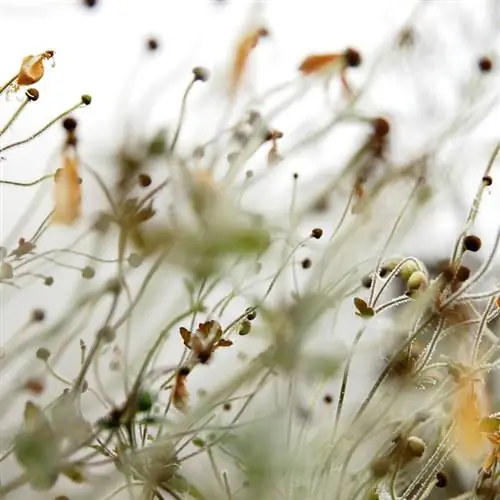- Author admin [email protected].
- Public 2023-12-16 16:46.
- Last modified 2025-06-01 06:02.
When garden plants take a breather in winter, the gardener still can't put his hands in his lap. On the contrary, important maintenance work is on the agenda as long as there is no bitter frost. Find out what to do in the winter garden here.

What important care work needs to be done in the winter garden?
In winter, the following maintenance work needs to be done in the garden: cutting bushes and trees, applying tree paint to protect against winter sun, making potted plants winter-proof, and watering when there is clear frost to avoid drought stress.
Cutting bushes and trees - this is what you should pay attention to
In winter, garden shears and pruning shears are in constant use to cut all kinds of trees into shape. Apart from spring-flowering ornamental shrubs and rhododendrons that are sensitive to cutting, winter pruning promotes vitality and flowering. To ensure that winter shape and maintenance pruning is successful, please pay attention to the following tips:
- It's not colder than - 2 degrees Celsius
- The wood is ideally dry or just slightly damp
- Blades and cutting blades are sharp and disinfected with alcohol (€8.00 on Amazon)
- Smooth the edges of larger cuts and apply a thin layer of wound paste
The best shape and maintenance pruning cannot prevent snow breakage. From a height of 10 cm, the white splendor should be removed from bushes, trees and hedges. At the latest when the branches bend under a thick blanket of snow, they should be relieved of their load so that they do not break.
Tree painting protects against winter sun
When the sun's rays hit tree trunks in severe frost, cracks in the bark are inevitable. Diseases and pests have just been waiting for this opportunity. You can prevent fatal damage with a special white coat. Thanks to the light color, sun rays are reflected. The bark heats up more slowly so it doesn't tear.
Putting a winter coat on potted plants - this is how it works
When grown in pots, hardy perennials significantly lose their frost tolerance. The small substrate volume and the exposed position behind thin vessel walls make a root ball vulnerable to frost. To ensure that potted plants survive the winter he althy and happy, the following protection is effective:
- Place pots in a niche protected from wind and rain
- Use insulating materials as a base, such as wooden blocks or polystyrene plates
- Wrap the bucket with bubble wrap, jute ribbons or winter fleece
- Cover the substrate with a thick layer of wood shavings or autumn leaves
If the pot diameter is less than 30 cm, all winter protection measures will be ineffective. Please put small containers in your frost-free, bright winter quarters.
Watering in beds and pots when there is frost - combat drought stress
Winter plant death is rarely due to frost and snow. Rather, drought stress is the most common cause of dead perennials and trees after the winter. Brilliantly beautiful winter weather with blue skies, severe frost and a lack of snow cover will cause your plants in the bed and pot to die of thirst. Evergreen plants in particular cannot survive this strain. Therefore, water regularly in cold frost weather in winter.
Tip
Have you decided on a living garden fence made of shrubs. Then between November and March is the right time to plant bare-root trees. In contrast to container goods, bare-root young plants are significantly cheaper, which has a positive effect on the budget when designing a meter-long enclosure.






